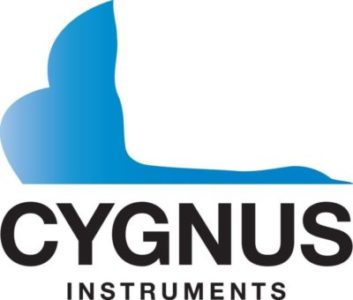How Does an Ultrasonic Leak Detector Work?
If you have been searching for information about how our Hatch Sure ultrasonic leak detection equipment works, then you are in the right place. Here you will be able to discover the basic principles behind how it works, which may help you utilize the device more effectively.
The first step in understanding is to know the device itself, specifically what it consists of and how it works from a technological perspective. From there, you will be able to understand how ultrasonic technology is used to ensure your hatches are secure and leak-free.
What does an ultrasonic hatch cover tester consist of?
The Cygnus Instruments Hatch Sure leak detector kit includes:
- Hatch Sure transceiver with protective case, neck and waist strap
- Telescopic extension and cable
- Two flexible inspection microphones
- Neckband headphones
- Hatch Sure transmitter with a protective case and carry strap
- Rechargeable batteries for the transmitter
- Rechargeable batteries for the receiver
- Charger for the rechargeable batteries
- Operation manual
- External DC power lead for the transmitter
- Emergency microphone cable
The main elements work harmoniously to give you the results you need and to ensure your cargo hold is watertight with no leaks.
The Hatch Sure transceiver is the main body of the device, which houses the computational hardware that gives you the information you need. It programs the ultrasonic emissions and analyses the responses it receives from the echoes and reverberations.
Housed in a protective carry case, like the transceiver, the transmitter is outfitted with 19 ultrasonic emitters, which are 16mm in diameter each. These 19 transmitters produce an omnidirectional sound field at 40 kHz up to the level of 130db.
Our receiver uses piezoelectric transducers to detect incoming ultrasonic sound waves, which produce electrical currents. These currents are sent to the computers inside the main Hatch Sure unit and give you an alert if there is a leak based on the information received.
How does this all work together?
Firstly, the transceiver sends a current to the transmitter that tells it to produce a burst of 40 kHz sound. This sound travels throughout the compartment, for example, the cargo hold, and will echo throughout the area. Generally, the sound waves will end up traveling back to the device and be detected by the receiver.
When there is a leak or gap present, sound waves will reverberate in a different pattern or not at all, instead escaping through the gap. This causes a loss in sound energy, which is fed back to the receiver and recorded by the transceiver. Upon detecting the anomaly, the transceiver will let you know that there is an anomaly through the headphones. An audible sound is what will give you the indication you need to determine if there is a leak and where it is as well.
Additionally, the telescopic nature of the inspection microphones means that you can undertake detailed testing of a specific area. This is particularly useful for testing seams and welds that are hard-to-reach places but maybe the difference between a secure hold and one that allows water to enter.
Water damage costs the transportation industry millions every year, but thanks to our Hatch Sure cover tester, our clients are substantially reducing these losses. Our reliable and innovative technology gives our customers the peace of mind they need to confidently send their ships out with precious cargo knowing their cargo hold is secure.
Contact Us
If you would like any further information about the Hatch Sure leak detector or any other items in our range, contact us today at +441305265533.


